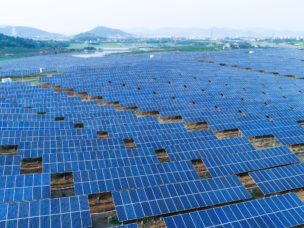Stay in the know
Subscribe to the Renewable Energy Blog and we'll send you an email each time something new is posted.
Subscribe to the Renewable Energy Blog and we'll send you an email each time something new is posted.
Blogs
Renewable Energy Blog
Why “Maine Won’t Wait” on Climate Action and What the Rush Means for Developers
In 2019, Maine’s Governor, Janet Mills, addressed the United Nations, laying out a plan for the state to reach carbon neutrality by 2045. This was considered an aggressive goal when compared to Maine’s sister states that have been working for the last decade to establish renewable energy markets to assist with reaching similar carbon neutrality goals. In her address, Governor Mills established a plan to invest in renewable energy from sea to land; investments that have come to fruition since that address.
In the last year, Maine has announced, expanded, and partnered with the United Kingdom to advance the research and development of Floating Offshore Wind Platforms. In December, Governor Mills released the state’s climate action plan aimed to create economic opportunities for businesses and industries to invest in clean energy growth. All of this momentum towards clean energy means one thing for solar developers: opportunity.
With Massachusetts’ prolonged delay in releasing and approving its expanded SMART program, Maine is showing that it wants to move, and move quickly, to set up a strong, competitive solar market to help it reach its ambitious clean energy goals. Developers may find that land siting in Maine is easier to navigate than under Massachusetts’ SMART program. Land use has been a contentious topic since the beginning of SMART, and the introduction of stricter land-use regulations has left some projects in the SMART pipeline unviable. Maine projects may find a friendlier atmosphere allowing landowners, especially farmers, more freedom to decide how to use their land or take advantage of dual-use projects.
Developers should still remain cautious when looking to expand into Maine’s new and motivated solar market. Barriers still exist to siting, infrastructure capabilities make siting larger projects closer to the electricity grid more competitive, land and wildlife protections may require developers to think creatively, and local constituent concerns may add risk to successful project development. Maine currently does not have solar regulations that provide a straightforward compensation structure or incorporate land-use restrictions, siting and permitting is currently governed at the local town planning and zoning level, but state officials envision that an inclusive process to create incentives and regulations to guide solar development will be forthcoming in the new year. Given the enthusiastic support Maine is providing to clean energy development, the benefits of being a first-mover in this nascent market may still outweigh the risk.

